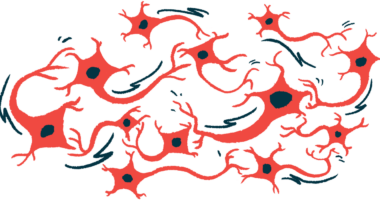
Palliative care for Huntington’s disease
Last updated June 24, 2025, by Agata Boxe

Huntington’s disease (HD) can be hard to manage. As the disease progresses, feeling overwhelmed is normal, but you don’t have to face it alone. Palliative care offers compassionate support to help lessen its burden, making daily life a little more manageable for you and your caregivers.
While some people think palliative care is only for those nearing the end of life, it can be introduced at any stage of HD. Its primary goal is to improve your quality of life, helping you stay as comfortable and independent as possible.
Key aspects of palliative care for Huntington’s disease
Palliative care for HD covers managing the physical symptoms of Huntington’s, as well as emotional support, and cognitive and behavioral care.
Your palliative care team may comprise a doctor, nurse, counselor, and social worker. A spiritual advisor may also be included, to provide spiritual support in challenging moments.
Physical symptom management
Common physical symptoms of HD include pain, muscle rigidity or contractures, slowed and uncoordinated movement, and speech and swallowing difficulties. Chorea, or sudden, unpredictable jerking or twisting movements, also is common. Palliative care can provide relief through medications and supportive therapies.
Palliative care can include speech therapy, which offers techniques to help you maintain your ability to speak, as well as to swallow safely. This may help ease feeding problems and prevent significant weight loss and aspiration pneumonia, which is a lung infection caused by inhalation of food, liquids, or stomach contents.
These complications become increasingly more common in advanced stages of HD. If you experience these symptoms, your care team will work with you to explore options like artificial feeding or a feeding tube, always keeping your comfort and wishes in mind.
Physical and occupational therapy can also make a big difference. Physical therapy can help improve balance and prevent falls. It also can teach you how to use assistive devices such as walkers or canes.
Occupational therapy can help with everyday activities such as dressing and eating while offering ways to make your home safer. Such safety measures may include adding padding to hard surfaces to reduce the risk of injury.
Psychological and emotional support
The severity of its symptoms and the realization that Huntington’s is a life-threatening condition can be a lot to handle.
Talking with a palliative care therapist can help. These individuals will listen to your concerns, help you process feelings of grief and worry, and offer strategies to support your emotional well-being. They may also prescribe medications to help with anxiety and depression, especially as the disease advances.
A therapist can also recommend practices such as mindfulness, breathing exercises, and journaling, to provide comfort and a sense of control.
Connecting with others who understand what you’re going through can also make a difference. Support groups and online communities, like Huntington’s Disease News’ Facebook group, can offer extra encouragement.
Cognitive and behavioral care
One of the most difficult parts of living with HD is the gradual changes in thinking and memory that can make daily life more challenging. Your palliative care team can help you create a daily routine that increases stability and reduces confusion.
If you’re struggling with impulse control or aggression, your therapist can work with you by prescribing medications or other supportive strategies. Therapists can also help you navigate relationships with caregivers, family, and friends so you feel heard and understood.
End-of-life care planning
Palliative care can be incorporated into end-of-life care planning, including hospice care.
Hospice care for HD is considered appropriate when a patient is expected to live six months or less. Hospice teams can provide care in a specialized facility or in the comfort of one’s home.
Because Huntington’s typically progresses over many years, it can be hard to predict when the end of life is near. Some possible signs are significant weight loss, increased susceptibility to infections, trouble breathing and sleeping, restlessness, or being unresponsive for most of the day.
Ideally, HD patients will participate in advance care planning so they can make informed decisions and communicate them to others. Planning in advance allows people with Huntington’s to outline their preferences for hospitalization, resuscitation, and feeding tube use.
Family and caregiver support
Burnout is common among caregivers, who often focus on caring for their loved ones and forget to care for themselves.
Part of palliative care includes ways for caregivers to nurture their emotional well-being through services like talk therapy and temporary care, such as in-home providers. Such measures can help caregivers take breaks to rest and recharge, and to focus on themselves for a time.
Meeting other HD caregivers through support groups, such as those listed by the Huntington’s Disease Society of America, can also provide a source of advice and empathy.
Timing and accessibility of palliative care
Because palliative care effectively manages symptoms and provides emotional support, your doctor may recommend that you begin it soon after diagnosis.
However, you may face accessibility barriers. One of them is the stigma surrounding palliative care, which is often mistakenly seen as a type of care provided only near the end of life. You may find it challenging to overcome this stigma and feel hesitant to consider it in the early stages of the disease.
Financial constraints can further limit access. While insurance often covers palliative care, patients and their families may still face significant costs due to copayments for some services.
Reaching out to HD organizations for financial assistance is one way to help lessen the financial burden for the person with HD and their family.
Benefits of early integration of palliative care for Huntington’s disease
At any stage of HD, you or your caregiver can ask your doctor for a referral to a palliative care specialist.
You may feel that you don’t need palliative care if you are in the early stages of the disease. However, integrating it early can help to manage symptoms and improve your long-term quality of life as the disease progresses.
Addressing symptoms in their initial stages can help you address any discomfort they may cause, and help you feel better in the long run. The better you feel physically, the more this will benefit your emotional well-being.
The holistic effect of early palliative care can extend to the families of patients with HD. Communicating with the care team can allow them to receive advice, emotional support, and assistance so they can best support you.
Huntington’s Disease News is strictly a news and information website about the disease. It does not provide medical advice, diagnosis, or treatment. This content is not intended to be a substitute for professional medical advice, diagnosis, or treatment. Always seek the advice of your physician or other qualified health provider with any questions you may have regarding a medical condition. Never disregard professional medical advice or delay in seeking it because of something you have read on this website.
Recent Posts
- Faulty cellular waste disposal system may drive Huntington’s: Study
- What the holidays mean when living with Huntington’s disease
- $12M grant will back first trial of stem cell therapy for Huntington’s
- A tribute to the kindness of strangers in life with Huntington’s
- How to support someone who is planning for future care
- Antipsychotics improve functional capacity, independence in HD
- Despite dwindling resources, hope endures among researchers
- The ‘invisible’ symptoms of Huntington’s that people don’t see
- Genetic variant delays Huntington’s onset by up to 23 years: Study
- Watching Huntington’s switch roles in our marriage was jarring



